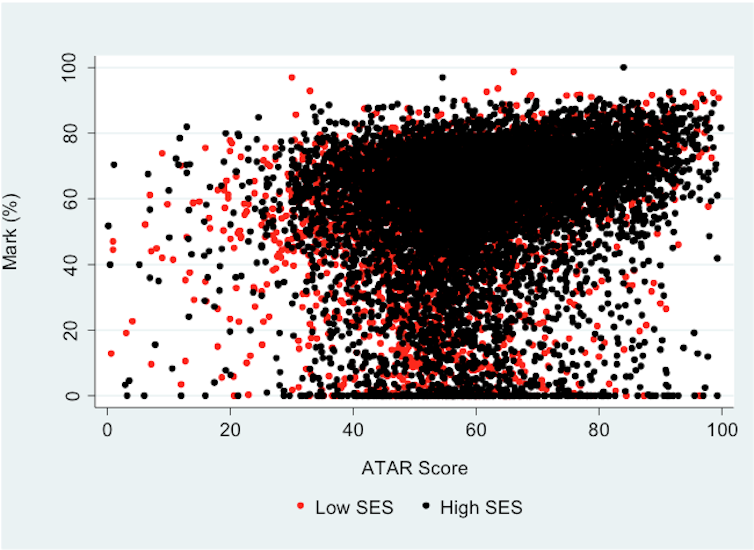
It’s generally assumed that students who do well at school will go on to do well at university, and students who perform poorly at school will continue to under achieve in their tertiary studies. New research from Victoria University has found that, especially for disadvantaged students, neither is necessarily the case.
Not all university students are “typical”, and many come from diverse backgrounds and enter university from different pathways so it is important to give numerous other factors close consideration when discussing student success.
We have completed a report on first-year, full-time student achievement at Victoria University, with support from the National Centre for Student Equity in Higher Education at Curtin University. VU has strong representation from lower socio-economic groups and recent migrant families in its student population, which means we were able to study achievement across a diverse group of students.
For students in our study, more than 55% were female, the mean ATAR score was less than 60, about one in five were born in non-English speaking countries, about one third speak a language other than English at home and more than 80% went to government or Catholic schools.
For these students, we found ATARs to be a weak predictor of their academic performance.
The methods
To accurately look at the role of ATARs in predicting university marks for such a diverse student cohort, we have considered many factors that are important for determining outcomes. We also considered standard measures of socio-economic status and, given mounting criticism of those, we developed a new hybrid measure.
Our new measure of low socio-economic status adjusts the geographic measure of the 2011 Census to account for school background for individual students. Subsequent research (to be presented in coming months) shows that this new measure of socio-economic status outperforms five other alternatives that incorporate ABS data with school types and VCE rankings.
Major findings
While on average students with higher ATARs achieved higher marks in first-year courses, many also achieved low marks. And, many low-ATAR students achieved high marks (see Chart 1 below). This suggests that with proper, considered support programs in place, students with low ATARs can be successful in university studies.

Also of note is that low socio-economic students perform better than high socio-economic students for a given ATAR score in their first year results, when controlling for other variables. This indicates that students can perform well despite disadvantages.
However, we also find that when all observable factors are considered, high socio-economic students do better on average than low socio-economic students. This shows the extent to which factors other than ATAR scores pull down marks for low socio-economic students, suggesting that ATARs should not be the only consideration for determining student admissions.
Another interesting finding is that school quality (as measured by median school VCE score) has a small influence on first year performance. Again, controlling for other variables, some students from lower performing schools can do better than their peers from elite schools in their first year of university.
What now?
Having a better understanding of what ATARs mean for success at university is important both for national education policy, and for individual universities that determine their own educational strategies.
While Victoria University may be more diverse than other institutions, the findings we’ve uncovered warrant consideration across all universities. Low ATAR students from low socio-economic families and non-English speaking backgrounds, with the right support, can succeed at university.
George Messinis, Senior Research Fellow at the Victoria Institute of Strategic Economic Studies (VISES), Victoria University
This article is republished from The Conversation under a Creative Commons license. Read the original article.
No comments:
Post a Comment